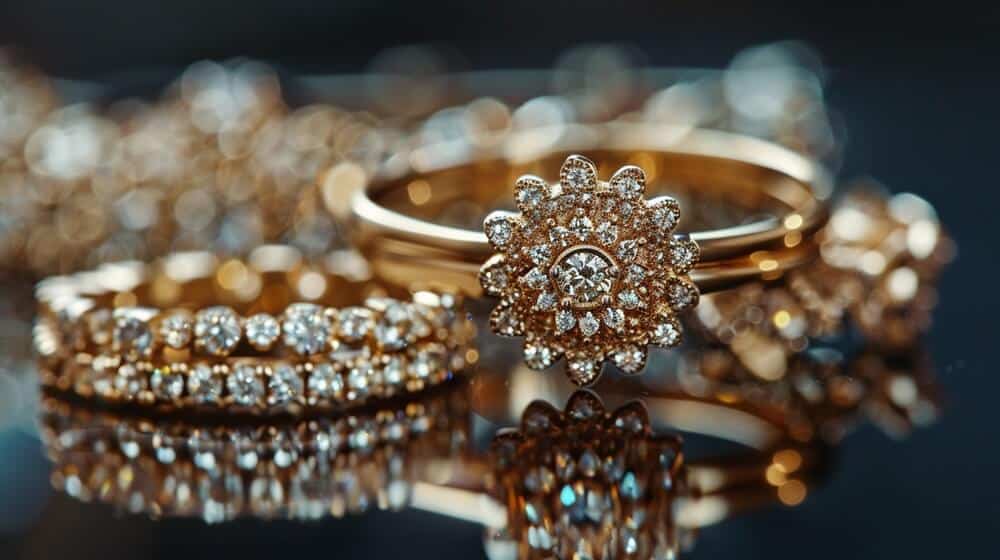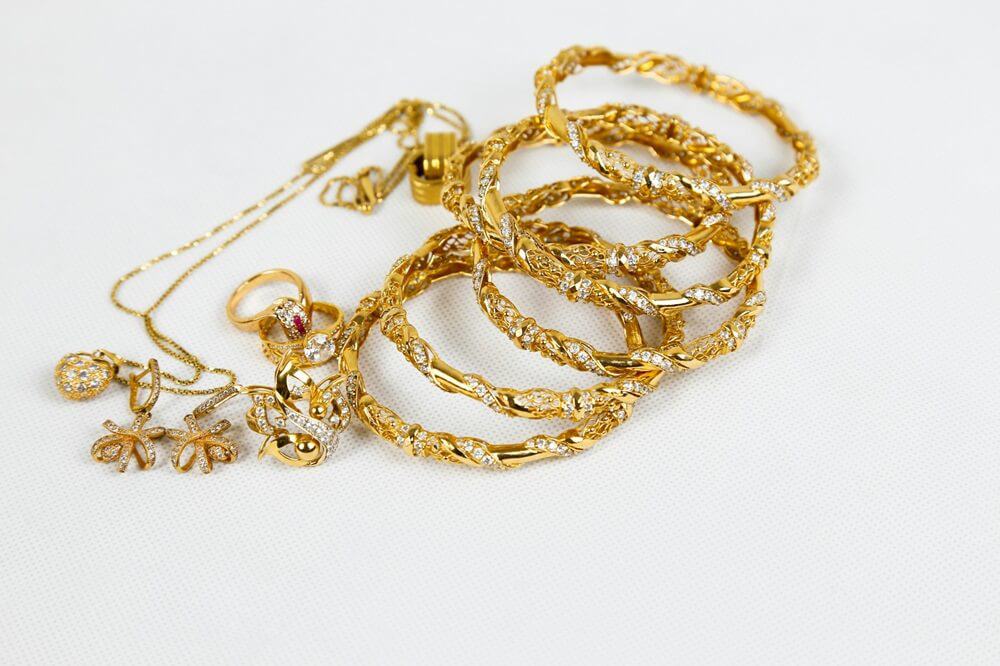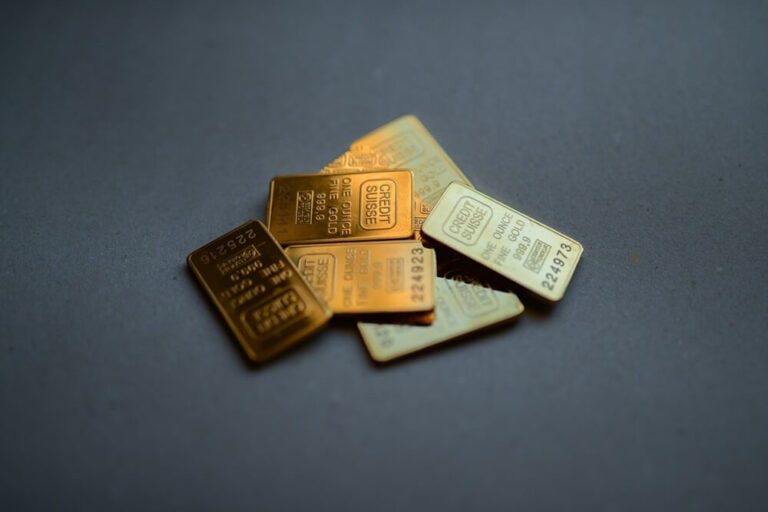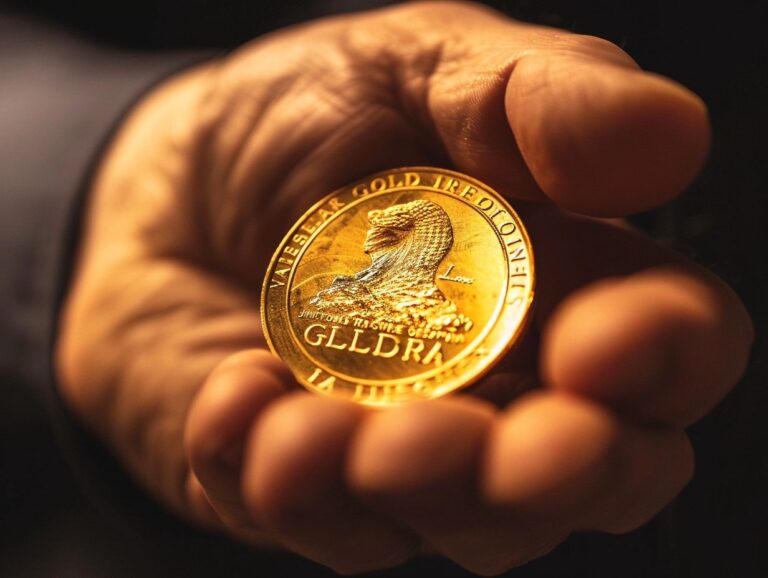- Our content is independently written and reviewed by trusted reviewers & fact-checkers.
- Your information is never sold. We can earn money by connecting you with top Gold IRA Companies. Learn how our reviews work.
- Want to learn more? Meet our authors and explore our editorial policy.

The outstanding beauty of fine jewelry may be hard to describe. However, as with any other product, there are also technical terms to define the most important information about them, making it easier for a customer to make a purchase.While browsing through any products from precious metals or gemstones, you are likely to see such parameters as karats or carats. Even though they may seem very similar, they illustrate completely different things. Read on to find out what the carat vs. karat difference is!
Table of Contents
Short Summary
- Carat is a unit for gemstone weight measurement in the US
- Karat is used to measure gold purity in the US
- Both words are derived from the Greek word keration, meaning “carob seeds”
- In other countries like the UK or Australia, carat is used for both measurements
- Gold is too soft, so it needs to be alloyed with other metals for durability
- 916 Gold is the purest gold you can find in jewelry
- Gold bars sold as an investment are 99,5-99,9% pure gold
What Is a Carat?
Carat is used to measure the weight of a gemstone, especially a diamond. One carat is equivalent to 0.007 ounces (or 0.2 grams). There are also systems where the weight of a diamond is divided into 100 points, and one carat equals these 100 points.
Diamonds that weigh more than 1 carat are usually characterized in terms of their carat value, like a 3-carat diamond, a 3.5-carat diamond, etc.
As the weight of a diamond is normally associated with its size, this measurement, on a practical level, is also frequently applied to say how big a particular diamond is.
To have a point of reference, an average diamond you will see in an engagement ring is around 1 carat or less.
What Is Karat?
Karat, on the other hand, is used to describe the purity of gold. As it is quite a soft metal, it is commonly alloyed with other metals to increase the durability and strength of a prepared piece of jewelry or another object.
The amount of actual gold in a goldsmith’s product is determined by its karat value – the higher the number, the more pure gold can be found in it. You can always check the purity of any gold object at the numerical stamp that must be made on it.
Gold products are rated out of 24 parts, so if you see a 24k stamp, it means it is (almost) entirely pure gold. However, a level close to that purity (99,5-99,9%) is usually encountered only if you are selling or buying gold bars.
In the case of jewelry, there will be, for example, 14 or 18 parts of gold, and the remaining parts will consist of such metals as copper, zinc, nickel, or silver.

Karat vs. Carat – Local Differences
The above-mentioned explanations are valid when we are talking about the United States. However, if you go abroad, you need to be aware that there can be local differences in understanding these two terms.
For example, in Australia and the United Kingdom, carat is used both for gemstone weight and gold purity. For this reason, it is always worth checking the context and making sure that you understand which meaning is valid in a particular situation, especially when you are buying gold or gemstones.
Etymology of Carats and Karats
Both the words “carat” and “karat” seem to be derived from the ancient Greek word keration, which means ‘carob seeds.’ This is because before the metric system was created, people used to check the weight of jewelry pieces by comparing them to the number of those seeds.
Constantine the Great, a Roman emperor, introduced a new gold coin called solidus in order to fight inflation during his reign. Every carob bean-carat equaled a 1/24th of a gold solidus coin, and this is how the 24-karat gold metric was established.
Does the Number of Karats Affect the Color?
Thanks to alloying gold with other metals, it can create more durable objects, like rings, bracelets, necklaces, or other jewelry pieces. As the amount of pure gold can vary from one product to another, they may take different colors.
For instance, in the case of yellow gold jewelry, 18k pieces have a bit more buttery shade than 12k or 10k pieces. When it comes to other colors, the shade differences are harder to distinguish. 18k and 14k white gold items seem basically the same when you look at them with the naked eye. However, 14k rose gold products can be a bit rosier than 18k ones if you look carefully.

What Is 916 Gold?
It happens that when looking for a karat or carat measurement, you will see different information on a piece of gold jewelry, ornament, or coin. It can be marked as “916 Gold”, which means that the item contains 91.6% pure gold, and the remaining ingredients are other base or precious metals.
Keep in mind that it is the purest alloy you can find in jewelry, as there will be as many as 91.6 grams of pure gold in every 100 grams of alloy (22 karat/24 karat = 91.6%). The BIS symbol should be engraved on the 916 hallmark gold to confirm its legitimacy.
Carat vs. Karat – The Final Note
All in all, in the United States, the karat vs. carat difference is pretty simple. The weight of diamonds and other gemstones is measured in carats, and karat is used for measuring gold purity in particular items. The higher the number, the more pure gold content you can be sure about.
However, you can’t get any 100% gold items as this precious metal is too soft. You can find the purest alloy when buying gold bricks – they are usually around 99,5% (or even 99,9%) pure gold.
It is not that uncommon nowadays – many people invest in gold to protect their savings and benefit from that in the future. If you want to get more information on how and where to do it, browse through our website or contact our professional team!
Article Sources
At Gold IRA Blueprint, we dive deep into the world of gold IRAs, using trusted sources to back up our insights. Our sources range from official documents to expert interviews, ensuring our content is both accurate and reliable. We also draw on research from reputable publishers to give you the most comprehensive understanding possible. Check out our editorial policy to see how we maintain our high standards for accuracy and fairness. Also make sure to check out our Financial Review Process to have a better understanding of our process.














